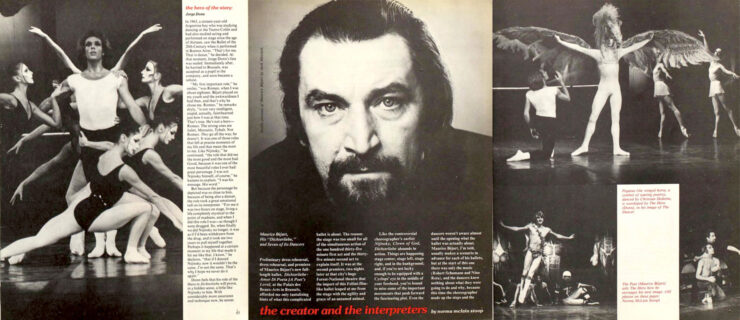My Body, My Stress
It’s no secret that a career as a professional dancer can be unpredictable and stressful. But with the economy in a deep recession, this year has been an especially difficult one for the dance world. Many companies have been forced to cut dancers or tours, and have lost rehearsal space. A dancer who once lay awake in bed replaying a botched pas de deux may now be staying up into the wee hours worrying about whether she’ll have a job come fall.
But before your heart rate begins to accelerate just thinking about it, remember that stress isn’t always a bad thing. “Our responses to stress are supposed to be helpful,” explains Dr. Richard Gibbs, MD, supervising physician at San Francisco Ballet and the chair of the Dance/USA Task Force on dancer health. In intensely stressful moments, the endocrine system and the sympathetic nervous system work together to release higher levels of cortisol and adrenaline. In an audition, for instance, this can actually benefit a dancer. “You’re going to be more alert, pick up choreography faster, and move more assuredly,” says Dr. Gibbs.
But when stress becomes chronic—say while searching for work in a depressed economic climate—its positive effects quickly turn harmful, which can have a big impact on your dancing. Too much adrenaline, for instance, keeps you in “fight or flight” mode, which leads to anxiety and fatigue. This slows down your reflexes and thinking processes, so learning choreography becomes a challenge. Extra adrenaline also makes your heart beat faster, speeds up your breathing, and makes you sweat more. (This is why staying hydrated is key.)
Because stress also causes an increase in cortisol levels, dancers are susceptible to all kinds of viral infections, since cortisol lowers immune system resistance. Cortisol also activates your gastrointestinal tract, which leads to more acid in the stomach, causing peptic ulcers. But perhaps most significantly, stress creates the perfect breeding ground for injury—and makes healing more difficult. “When stressful situations are on the line, injury rates go sky-high,” Dr. Gibbs explains. “This is because cortisol actually weakens tissue and bone.”
On a psychological level, stress also does damage. “Irritability is more likely,” says Dr. Harlene Goldschmidt, PhD, director of education and wellness at the New Jersey Dance Theatre Ensemble. “It’s easier to lose control of your emotions.” She also adds that stressed-out dancers often have trouble taking criticism, causing them to miss out on valuable feedback (and jeopardize a relationship with a teacher or director).
So how do you reduce the effects of stress? In addition to the obvious (like get eight hours of sleep), Dr. Gibbs suggests low-impact aerobic activity like riding a stationary bike, walking, or going for an easy jog one to three times a week. “If I have a stressed-out dancer, I recommend exercise,” he says. “It releases endorphins, and reduces injury and cholesterol. It’s the number one treatment for depression and anxiety.”
Yoga—which stretches and strengthens the body while calming the mind—along with a regular meditation practice have been lifesavers for Shila Tirabassi of the Stephen Petronio Company. Like others, the company has had dates cut this season, and the dancers have struggled with reduced income and more anxiety—all of which has an effect on Tirabassi’s body. Her hips get tense and her back goes into spasm. “Yoga has saved me,” she says.
And above all, don’t panic. If you’re in financial straits, ask yourself whether you need a second job, or could turn to a trusted friend in a worst-case scenario. Dr. Goldschmidt notes, “There are a lot of steps between having performances cut and being on the street.” And even if you’ve just been laid off, take advantage of downtime. “Give yourself permission to feel good on days when you’re relaxing,” she says.
Whatever happens, enjoy dancing while you are dancing. “Even in the midst of a struggle, remember that we’re striving to do something that we absolutely love—and that’s a gift that most of the world doesn’t get,” Tirabassi says. “Let those be the wheels that turn, not the ‘I need money and stability’ wheels. Getting to do the thing you love all day is what you should hold dear in your heart.”
Abigail Rasminsky, a former editor at
Dance Spirit, has written for The New York Times, The Forward, and The Nextbook Reader.
Photo: Erin Baiano; Photo illustration: Hanna Varady




